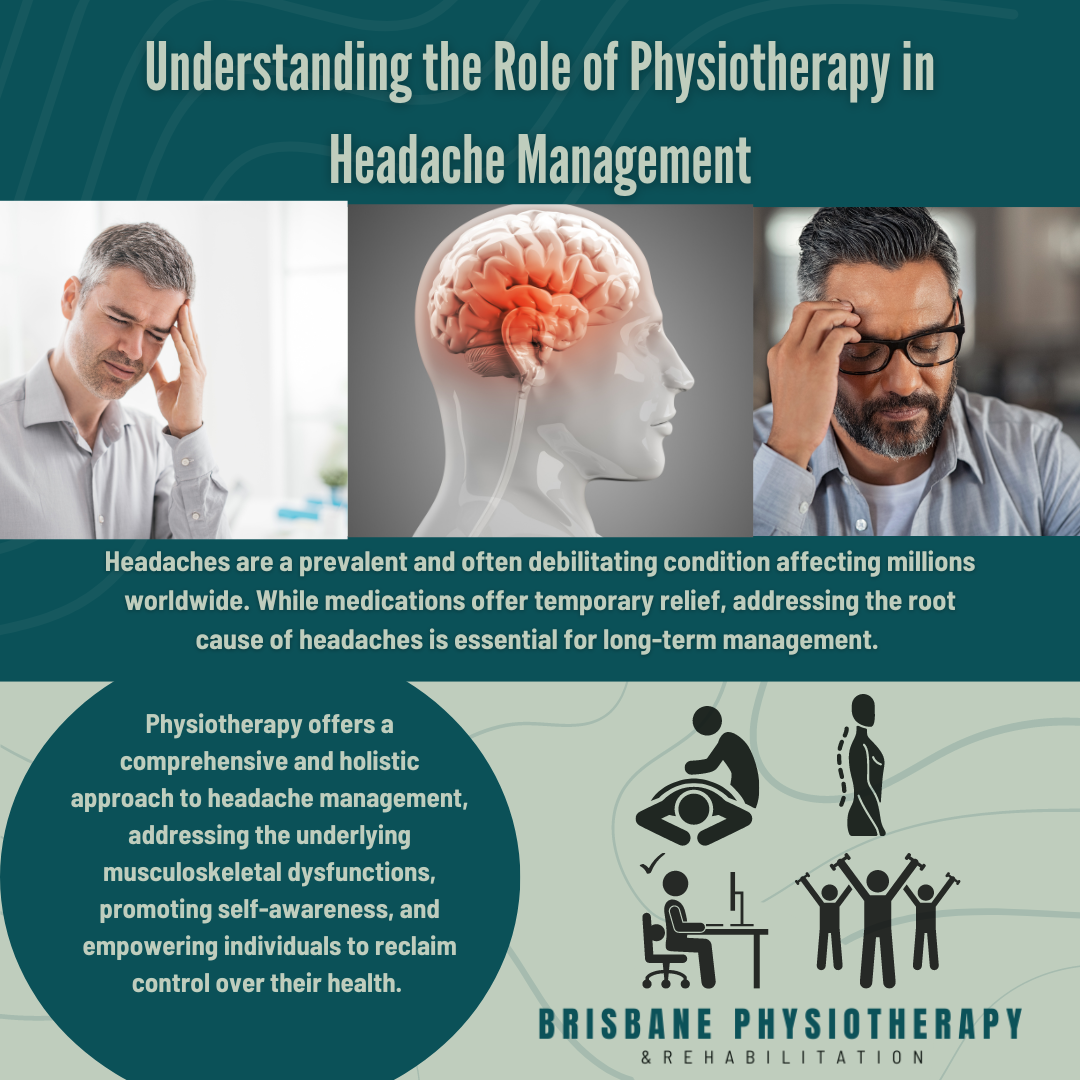Understanding the Role of Physiotherapy in Headache Management
Introduction:
Headaches are a prevalent and often debilitating condition affecting millions worldwide. While medications offer temporary relief, addressing the root cause of headaches is essential for long-term management.
Understanding Headaches:
Headaches manifest in various forms, including tension-type headaches, migraines, cervicogenic headaches, and cluster headaches, each with distinct characteristics and triggers. While tension-type headaches are often attributed to muscle tension and stress, migraines involve neurovascular mechanisms, and cervicogenic headaches originate from the cervical spine. Understanding the underlying mechanisms is crucial for tailoring effective treatment strategies.
Physiotherapy Approach:
Physiotherapy offers a multifaceted approach to headache management, encompassing assessment, manual therapy, exercise prescription, education, and lifestyle modifications. By addressing musculoskeletal imbalances, postural dysfunctions, and trigger points, physiotherapists aim to alleviate pain, improve function, and enhance overall well-being.
Assessment:
A thorough assessment is the cornerstone of physiotherapy intervention for headaches. This may include evaluating posture, range of motion, muscle strength, neurological function, and identifying contributing factors such as stress, poor ergonomics, or previous injuries. Understanding the individual's unique presentation guides the development of a tailored treatment plan.
Manual Therapy:
Hands-on techniques play a pivotal role in headache management, targeting muscle tension, joint dysfunction, and soft tissue restrictions. Manual therapy modalities such as joint mobilisations, myofascial release, trigger point therapy, and craniosacral therapy can help alleviate pain, restore mobility, and enhance circulation, promoting tissue healing.
Exercise Prescription:
Exercise is a fundamental component of headache management, aiming to improve strength, flexibility, posture, and overall physical conditioning. Tailored exercise programs may include neck and shoulder strengthening exercises, stretching routines, postural correction techniques, and relaxation exercises to reduce muscle tension and stress.
Education and Lifestyle Modifications:
Empowering individuals with knowledge about headache triggers, stress management techniques, ergonomics, sleep hygiene, and lifestyle modifications fosters self-management and long-term success. Educating patients about
healthy habits, stress reduction strategies, and ergonomic principles enables them to take an active role in their care and minimise headache recurrence.
Integration of Modalities:
In addition to manual therapy and exercise, physiotherapists may utilise adjunctive modalities such as heat therapy, cold therapy, ultrasound, electrical stimulation, and acupuncture to complement treatment and enhance pain relief. These modalities can target pain, inflammation, muscle spasms, and facilitate tissue healing, providing additional support in headache management.
Conclusion:
Physiotherapy offers a comprehensive and holistic approach to headache management, addressing the underlying musculoskeletal dysfunctions, promoting self-awareness, and empowering individuals to reclaim control over their health. By combining manual therapy, exercise prescription, education, and lifestyle modifications, physiotherapists play a vital role in alleviating pain, improving function, and enhancing quality of life for individuals suffering from headaches. If you're seeking sustainable solutions for your headaches, consulting with a qualified physiotherapist at Brisbane Physiotherapy can be the first step towards a pain-free future.

